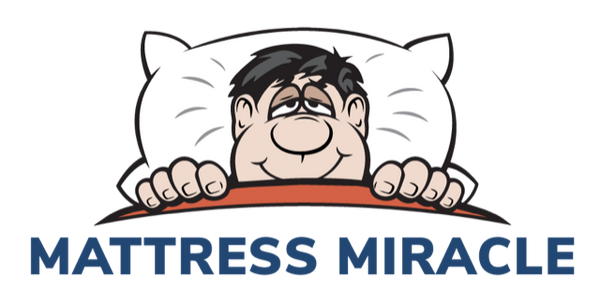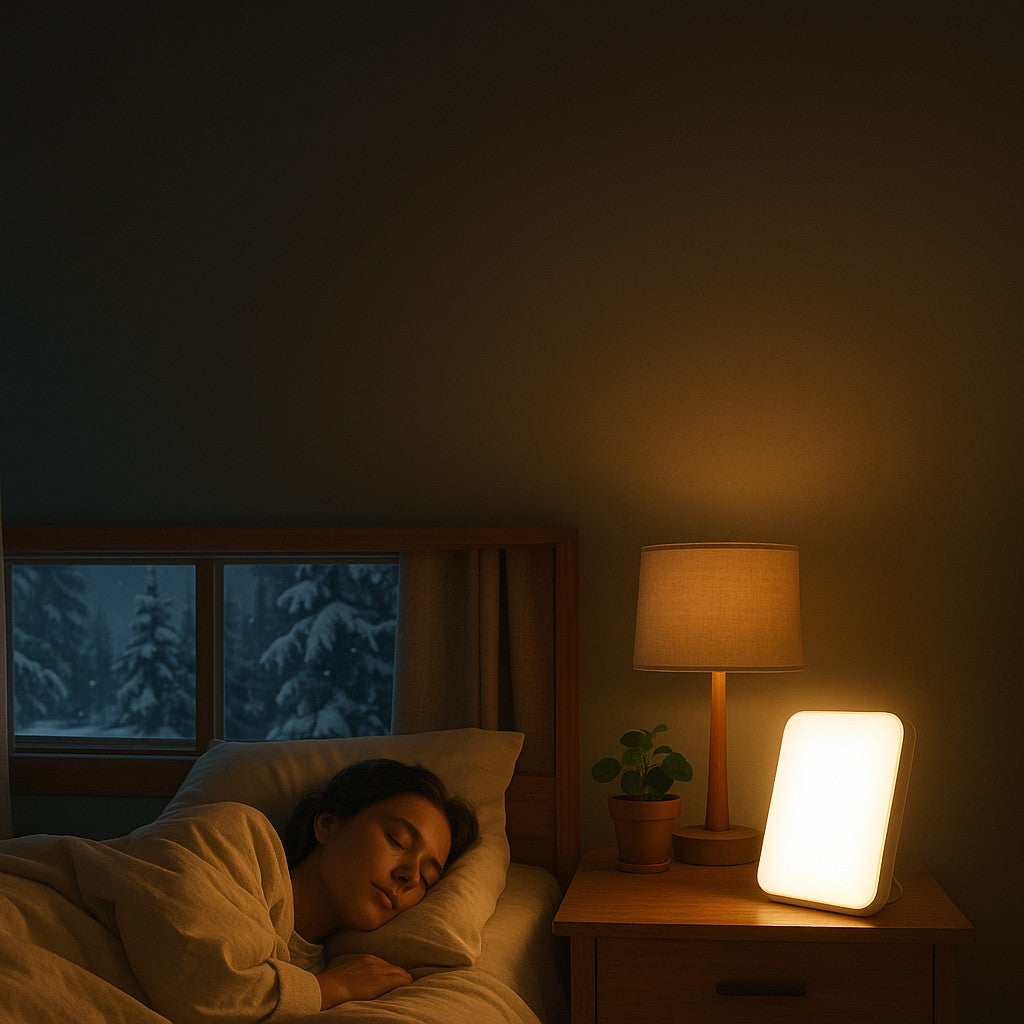Quick Answers
What temperature for sleeping? 15-19°C (60-67°F). Cooler than most people expect. Your body temperature drops when you sleep, and a cool room helps that happen.

How much sleep do I need? 7-9 hours for adults. But quality matters too - uninterrupted sleep is better than 9 hours of tossing and turning.
How do I fall asleep faster? Same bedtime every night. No screens an hour before bed. Keep it cool and dark. And honestly, a supportive mattress helps more than people realize.
Better Sleep When the Light Disappears
Seasonal affective disorder affects roughly 2-3% of Canadians severely and another 15% in milder forms. In Brantford and southern Ontario, we go from over 15 hours of daylight in June to less than 9 hours in December. That shift is enough to disrupt sleep patterns for many people, even those who don't experience full SAD.
Sleep and seasonal mood are deeply connected. Understanding that connection helps you manage both.
Why Less Light Means Worse Sleep
Your circadian rhythm runs on light exposure. When daylight hours drop:
- Melatonin production shifts. Your body starts producing sleep hormones earlier in the day and continues longer into the morning. You feel tired at 4 PM but can't fall asleep at 10 PM.
- Serotonin drops. Less sunlight means lower serotonin levels, which affects both mood and sleep quality. Serotonin is also a precursor to melatonin, so the whole system gets thrown off.
- Your internal clock drifts. Without strong light cues, your sleep-wake cycle can shift later and later, or become irregular.
Light Therapy for Better Sleep
The most effective treatment for SAD-related sleep problems is light exposure at the right times:
Morning Bright Light
Get bright light within an hour of waking. This can be:
- A 10,000 lux light therapy lamp, used for 20-30 minutes while you eat breakfast or drink coffee
- Time outside, even on cloudy days (outdoor light is much brighter than indoor)
- Opening all blinds and turning on every light in your home
Morning light tells your brain to stop producing melatonin and start the daytime part of your cycle. This makes you more alert during the day and appropriately tired at bedtime.
Evening Light Reduction
Equally important: reduce bright light in the evening. After 7 or 8 PM:
- Dim overhead lights
- Use warm-toned bulbs rather than bright white
- Enable night mode on phones and computers
- Consider blue-light blocking glasses if you need to use screens
Sleep Environment Adjustments
Your bedroom setup matters more when you're fighting seasonal sleep disruption:
Make Mornings Less Awful
Getting out of bed in the dark is hard. Options that help:
- Sunrise alarm clocks that gradually brighten before your alarm sounds
- Smart lights set to turn on slowly
- An adjustable bed that lets you raise your head gradually rather than going from horizontal to vertical
Maintain Sleep Quality
When you're tired all the time, actual rest becomes more important:
- A supportive mattress that doesn't cause tossing and turning
- Quality pillows that keep your spine aligned
- Bedding that regulates temperature so you don't wake up sweating or cold
Keep It Consistent
Same bedtime and wake time every day, including weekends. This is harder when you're fighting low energy and the urge to sleep in, but irregular schedules make SAD symptoms worse.
What Doesn't Help
Some common responses to SAD actually make sleep worse:
- Sleeping more. Oversleeping often makes fatigue worse, not better. It throws off your schedule and reduces sleep pressure for the next night.
- Alcohol. Using alcohol to cope with low mood disrupts sleep architecture and worsens both depression and sleep quality.
- Staying in bed. If you can't sleep, get up. Lying awake in bed teaches your brain that bed is a place for frustration, not rest.
- Irregular napping. Occasional naps aren't terrible, but regular afternoon naps make nighttime sleep harder.
When Sleep Changes Aren't Enough
Sleep improvements help mild seasonal mood changes, but SAD is a real condition that sometimes needs treatment beyond lifestyle adjustments. Talk to a doctor if:
- Depression interferes with work or relationships
- You have thoughts of self-harm
- Symptoms don't improve with light therapy and sleep changes
- You experience depression year-round that gets worse in winter
Options include light therapy (which we've discussed), cognitive behavioral therapy, and sometimes medication. Your family doctor can help determine what makes sense for your situation.
Creating a Restful Space
When seasonal changes are getting you down, your bedroom should feel like a refuge. That means:
- Comfortable sheets you look forward to getting into
- A warm duvet that feels cozy without overheating
- Minimal clutter and stress-inducing items (no work materials in the bedroom)
- Complete darkness when you're ready to sleep
We're Here
If your current sleep setup is making a hard season harder, come talk to us. Sometimes the right mattress, pillow, or bedding makes a bigger difference than people expect. We've been helping Brantford families through Ontario winters since 1987.
Visit us at 441½ West Street, Brantford. No pressure, just honest advice.

